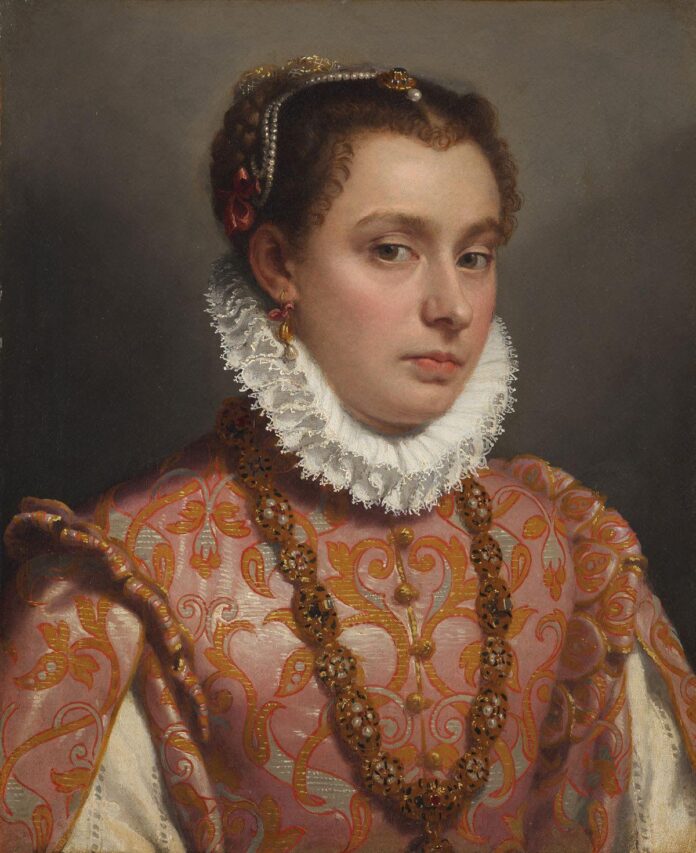For its nearly 90 years as a public institution, the Frick Collection in New York City did not own a single painted portrait of a woman from the Renaissance. But that has changed with its recent acquisition of Portrait of a Woman (around 1575), an oil painting by the Italian master Giovanni Battista Moroni. Depicted in a pink brocade dress and white neck ruff, with fine jewellery in her hair, the woman is a vision of elegance. Visitors can meet her gaze from 12 January, when the painting will be on view at the Frick Madison, the museum’s temporary home on Madison Avenue.
The Moroni portrait joins the Frick’s renowned collection of Old Masters paintings and European sculpture and decorative arts, originally established by its founder, the industrialist Henry Clay Frick. It complements Renaissance portraits of men by such artists as Bronzino, Titian and Tintoretto. But while several of the sitters in those works are known, the identity of Moroni’s muse remains a mystery.
The painting was previously on view at the Frick in 2019, as part of Moroni: The Riches of Renaissance Portraiture, the first major exhibition in the US of Moroni’s portraits. Around 125 portraits have been attributed to the Bergamo native, including roughly 15 independent portraits of women; the museum considers this work to be “one of the finest by Moroni in private hands”. Details such as the sitter’s luminous pearls and silver-gilt brocade demonstrate the artist’s exceptional skill.
“Portrait of a Woman was a star of our Moroni show, holding pride of place at the center of the Frick’s Oval Room,” the curator Aimee Ng, who co-organised the exhibition, said in a press release. “The canvas is a triumph painted at the height of the artist’s career, and its superb quality and condition are perfectly at home among the treasures of the Frick.”
The museum’s description of the work notes that the sitter presents a somewhat unconventional countenance for the time. Renaissance portraits of women tend to capture a more unassuming look—“to promote a more modest nature”—and, gazing to her right, with eyebrows raised slightly, Moroni’s subject gives what one could call the most subtle of side-eyes.
The museum acquired the work last year as a gift from the trust of a former trustee, the late Assadour O. Tavitian. “In giving this stunning painting to the Frick, he has added depth to our Renaissance holdings,” the Frick’s director Ian Wardropper said in a statement, “and we are thrilled to place the work immediately on view for the enjoyment of our visitors.”

























